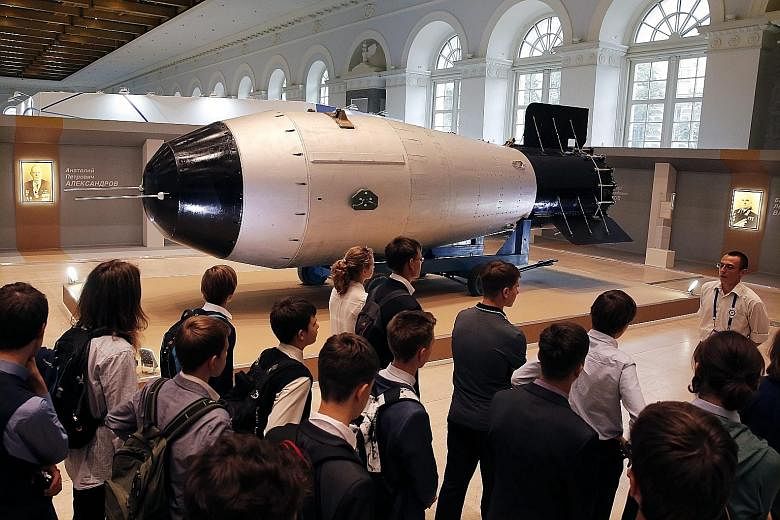MOSCOW • Eight metres long and weighing 25 tonnes, a replica of the so-called Tsar Bomb, the most powerful nuclear bomb ever detonated, has gone on display for the first time in Russia.
Tested in 1961 by the Soviet Union, the hydrogen bomb - also known as the AN-602 - was the result of an atomic research programme ordered by Soviet leader Joseph Stalin just before the end of World War II. Its goal: develop the atomic bomb as the United States had.
This symbol of the Cold War nuclear arms race is being showcased at an exhibition centre near the Kremlin to mark 70 years of Russian nuclear history. It comes as the nation's ties with the West remain strained by its 2014 annexation of Crimea from Ukraine and its alleged support for separatist rebels.
Mr Mikhail Bayaskhalanov, an exhibition guide, said: "Nuclear energy is not only atomic bombs and missiles but also civilian nuclear programmes, icebreakers, electricity production."
AGENCE FRANCE-PRESSE

